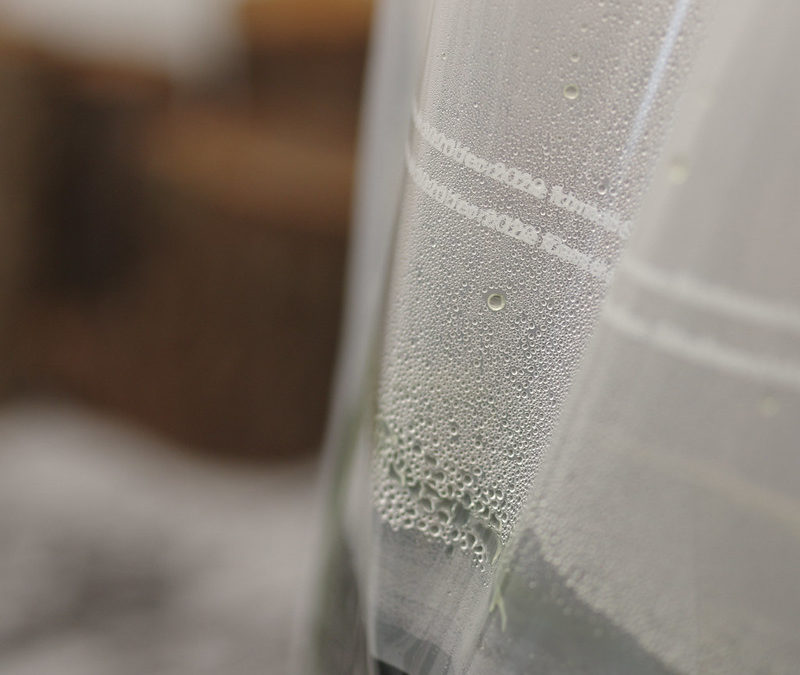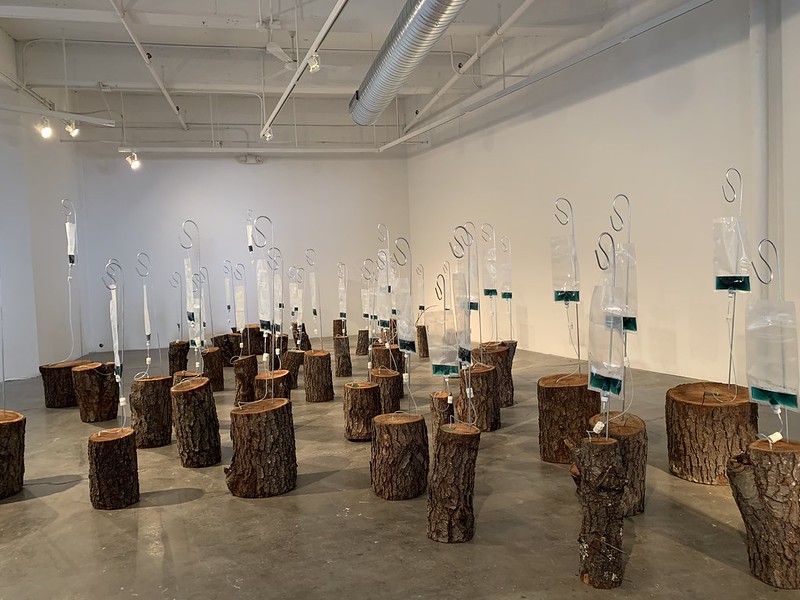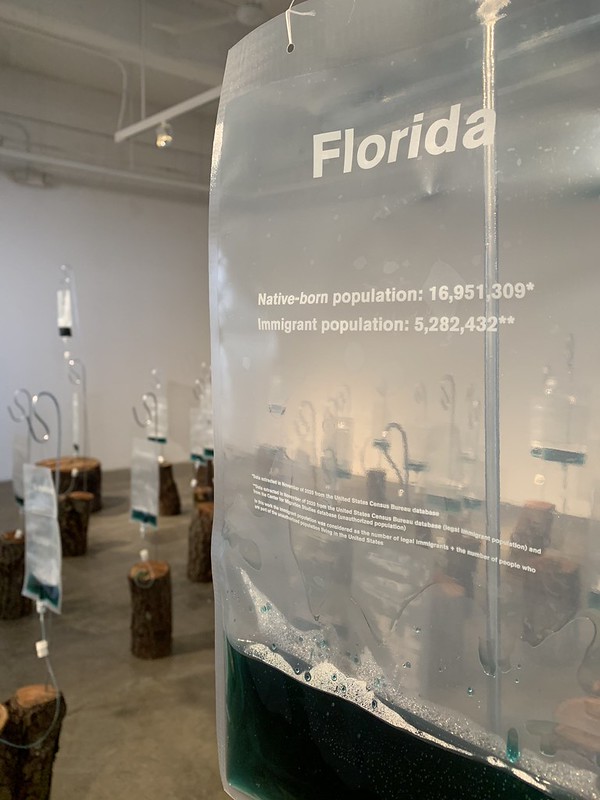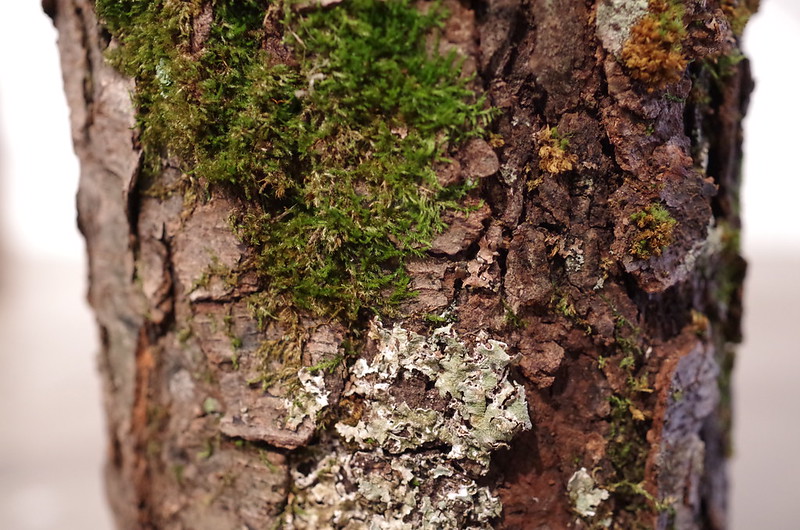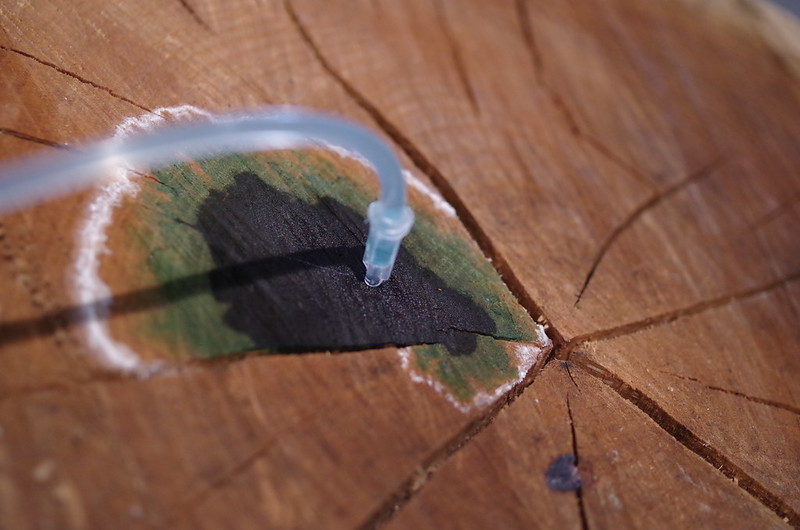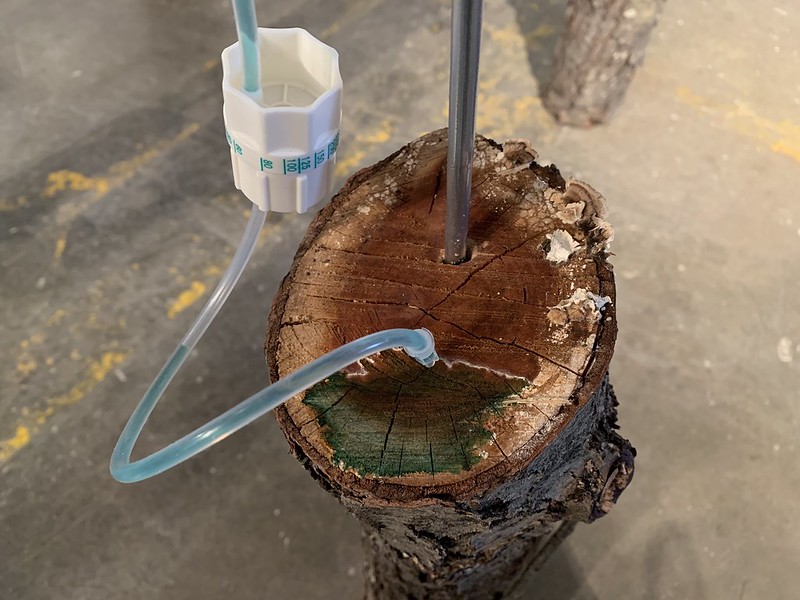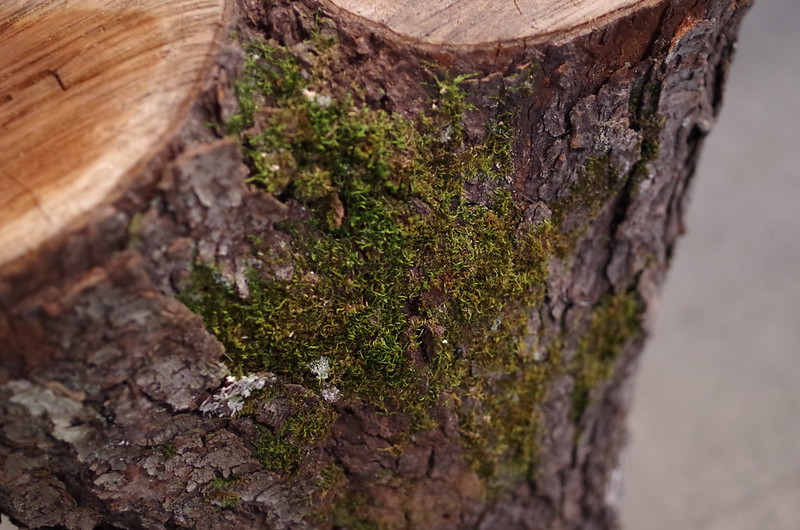Date/Time
Date(s) - 01/20/2021 - 03/06/2021
11:00 am until 5:00 pm
Location
Buffalo Arts Studio
Categories
Virtual Tour and Artist Talk via Facebook Live
6:00 pm Friday, January 22, 2021
Growing Together
Curatorial Essay by Shirley Verrico
“When trees grow together, nutrients and water can be optimally divided among them all so that each tree can grow into the best tree it can be.” —Peter Wohlleben
Black Cherry is an installation inspired by forest biodiversity and designed to recall a natural arboreal habitat. Although biodiversity is clearly necessary for healthy ecosystems to exist, it is also an integral part of religious, cultural and national identities. All major religions reference unique elements of nature and 231 species are formally used as national symbols in 142 countries (Shaw, J., Conservation International, 11/15/2018).
It is an installation that requires tending. Shibuya, who holds a Ph.D in Ecology and Nature Conservation from the Federal University of Paraná, Brazil, is uniquely qualified for this task. Currently an M.F.A. candidate in Studio Art at the University at Buffalo, Shibuya works at the intersection between biology and art. He explores different forms of life, from bacteria to trees, using different mediums and methods. All of his work reflects aspects of his own identity, and for Black Cherry, he draws on his experiences, including that of being an immigrant.
The black cherry (Prunus serotina) is a robust tree, native to the forests of North America. It supports diverse populations of insects, birds, and mammals. Considered a “pioneer species,” the black cherry is responsible for preparing the forest floor to nourish new organisms in search of a home. Using cut sections of a felled black cherry arranged across the gallery floor, Shibuya loosely lays out a map of the 50 United States*, even placing Alaska and Hawaii far afield in the adjjoing gallery space. The largest black cherry sections are placed where the largest states would be and each section of the tree sprouts a graceful metal rod supporting a transparent IV bag partially filled with a deep green fluid that flows down and into the rings of the tree.
Black Cherry is based on carefully researched data and each element has both a metaphorical and a quantitative meaning. The height of each rod is related to the number of people born in each state based on data extracted in November of 2020 from the United States Census Bureau database. The volume of liquid in each IV bag represents the number of immigrants residing in each of the states based on census data and estimates by the Center for Migration Studies. These data points, along with the name of the state, are also printed subtly in white on the correlating IV bag.
In addition to the constructed elements of the installation, Shibuya has set the stage for nature to take over, steadily amplifying the metaphor. As the black cherry absorbs the fluid, a variety of verdant shapes ringed in white mineral deposits form across the surface of the wood. Shibuya has sprinkled moss and fungus spores harvested from near-by woodlands on top of the black cherry sections. Although nearly undetectable at the opening of the exhibition, the spores begin growing almost immediately, nourished by the liquid in the IV bags.
Black Cherry uses both data and biology to create a parallel between the forest and immigration, showing that diversity is an important engine to keep both people and place alive. Together, the elements of the installation serve as a metaphor for the importance of living in the midst of diversity; a forest survives because of each individual organism inside it, and much like a community, it flourishes when the diverse inhabitants can work together in a network of support.
*The District of Columbia and Puerto Rico were not included due to lack of available data.
Artist Bio:
Felipe Shibuya was born in São Paulo, Brazil. He studied Ecology and Nature Conservation at the Federal University of Paraná, Brazil, where he earned his Ph.D. Currently, he is an M.F.A. candidate in Studio Art at the University at Buffalo, working at the intersection between biology and art.

